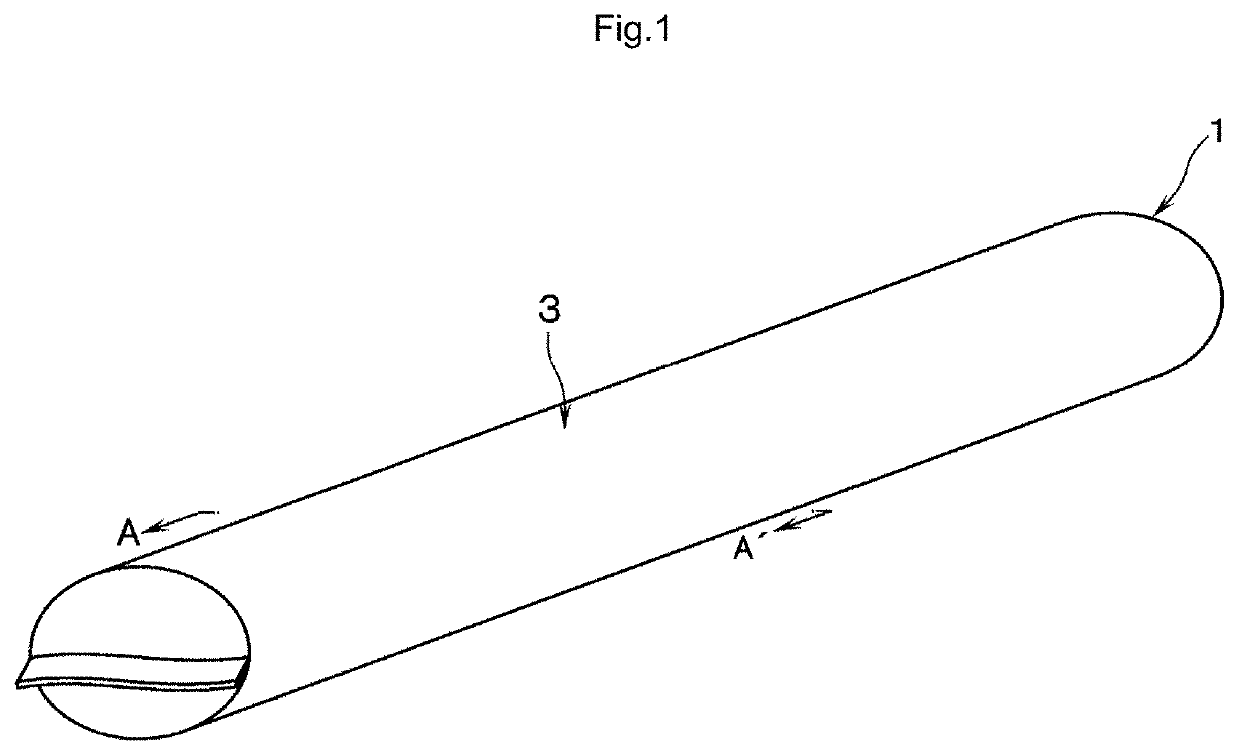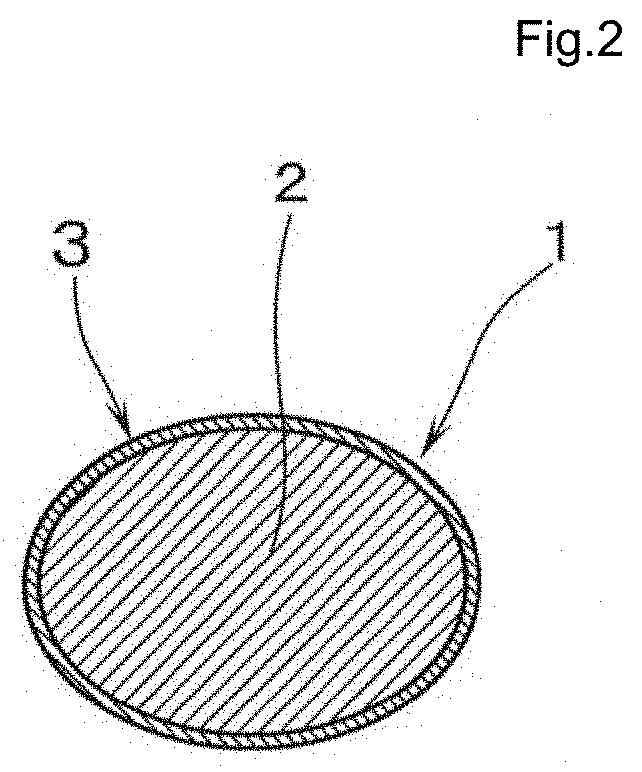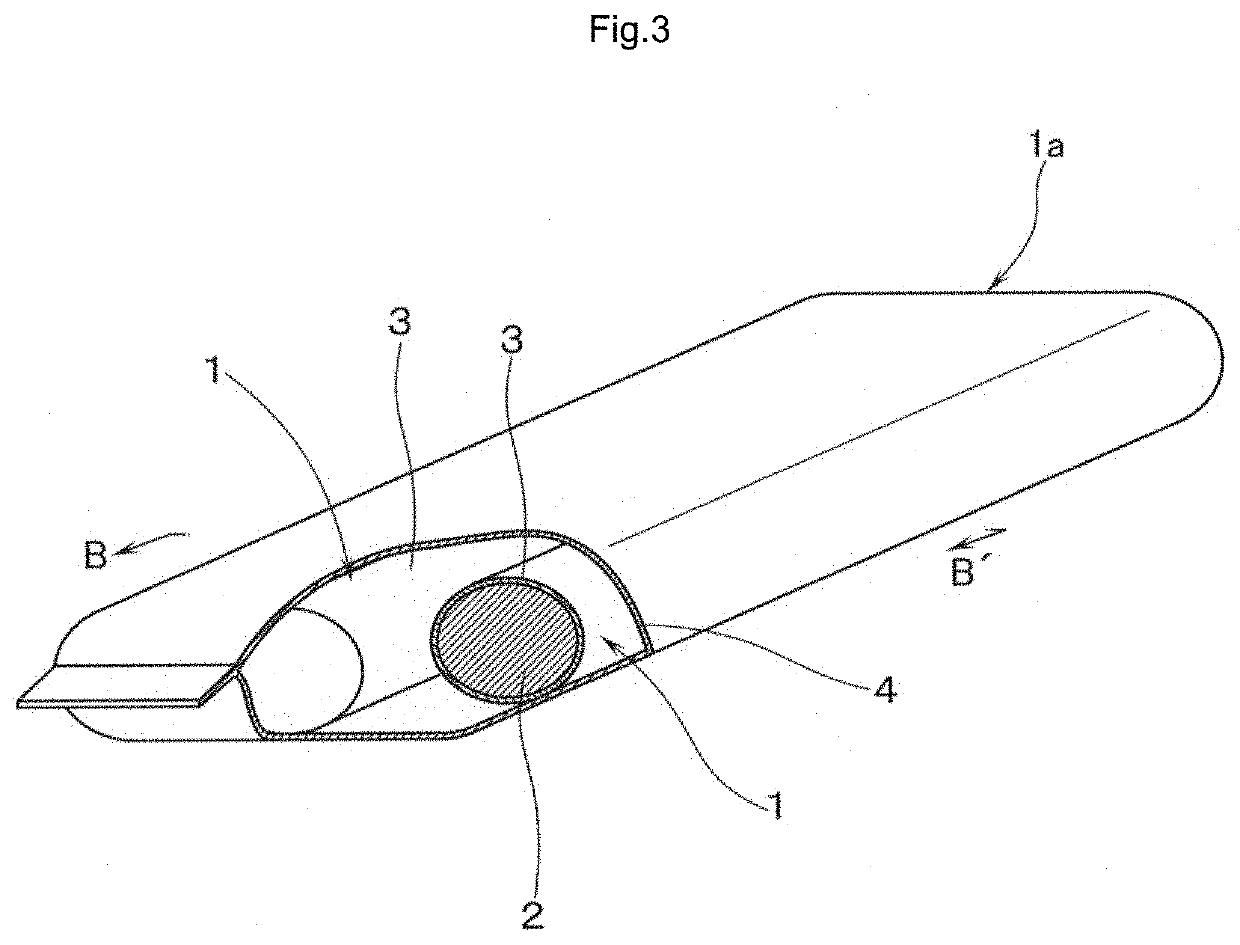Medium for plant cultivation
a plant cultivation and medium technology, applied in the field of medium for plant cultivation, can solve the problems of no disposal method, and achieve the effects of small environmental load, water retention property and air permeability
- Summary
- Abstract
- Description
- Claims
- Application Information
AI Technical Summary
Benefits of technology
Problems solved by technology
Method used
Image
Examples
example 1
[0080]As foam bodies, 5 kg of foamed beads (an apparent density of 20 kg / m3, an average particle diameter of 5.3 mm, an average cell diameter of 188 μm, and a cell film thickness of 1.0 μm) of a polylactic acid-based resin having a bulk foaming ratio of 100 times were charged at a charging speed of 50 kg / hr from a charging port of a mesh mill (HA8-2542-25, manufactured by Horai Co., Ltd.) on which a 1.5ϕ) screen was set, and crushed.
[0081]The bulk foaming ratio of foamed beads of a polylactic acid-based resin is a value obtained by preparing a graduated cylinder with a volume of 1 L, packing the foamed beads into the graduated cylinder up to the marked line of 1 L, measuring the mass (g) of the packed foamed beads, performing unit conversion to determine the bulk density (kg / m3), and then dividing the resin density of polylactic acid of 1.25 (g / cm3) by the above bulk density.
[0082]The apparent density of the foamed beads of a polylactic acid-based resin was determined as follows. Fi...
example 2
[0090]A medium for plant cultivation was produced in a similar manner as in Example 1 except that the mesh diameter of the screen set in a mesh mill was changed to ϕ3, and the produced medium was immersed in water.
example 3
[0091]A medium for plant cultivation was produced in a similar manner as in Example 1 except that the mesh diameter of the screen set in a mesh mill was changed to ϕ1.7, and the produced medium was immersed in water.
PUM
| Property | Measurement | Unit |
|---|---|---|
| specific surface area | aaaaa | aaaaa |
| density | aaaaa | aaaaa |
| density | aaaaa | aaaaa |
Abstract
Description
Claims
Application Information
 Login to View More
Login to View More - R&D
- Intellectual Property
- Life Sciences
- Materials
- Tech Scout
- Unparalleled Data Quality
- Higher Quality Content
- 60% Fewer Hallucinations
Browse by: Latest US Patents, China's latest patents, Technical Efficacy Thesaurus, Application Domain, Technology Topic, Popular Technical Reports.
© 2025 PatSnap. All rights reserved.Legal|Privacy policy|Modern Slavery Act Transparency Statement|Sitemap|About US| Contact US: help@patsnap.com



